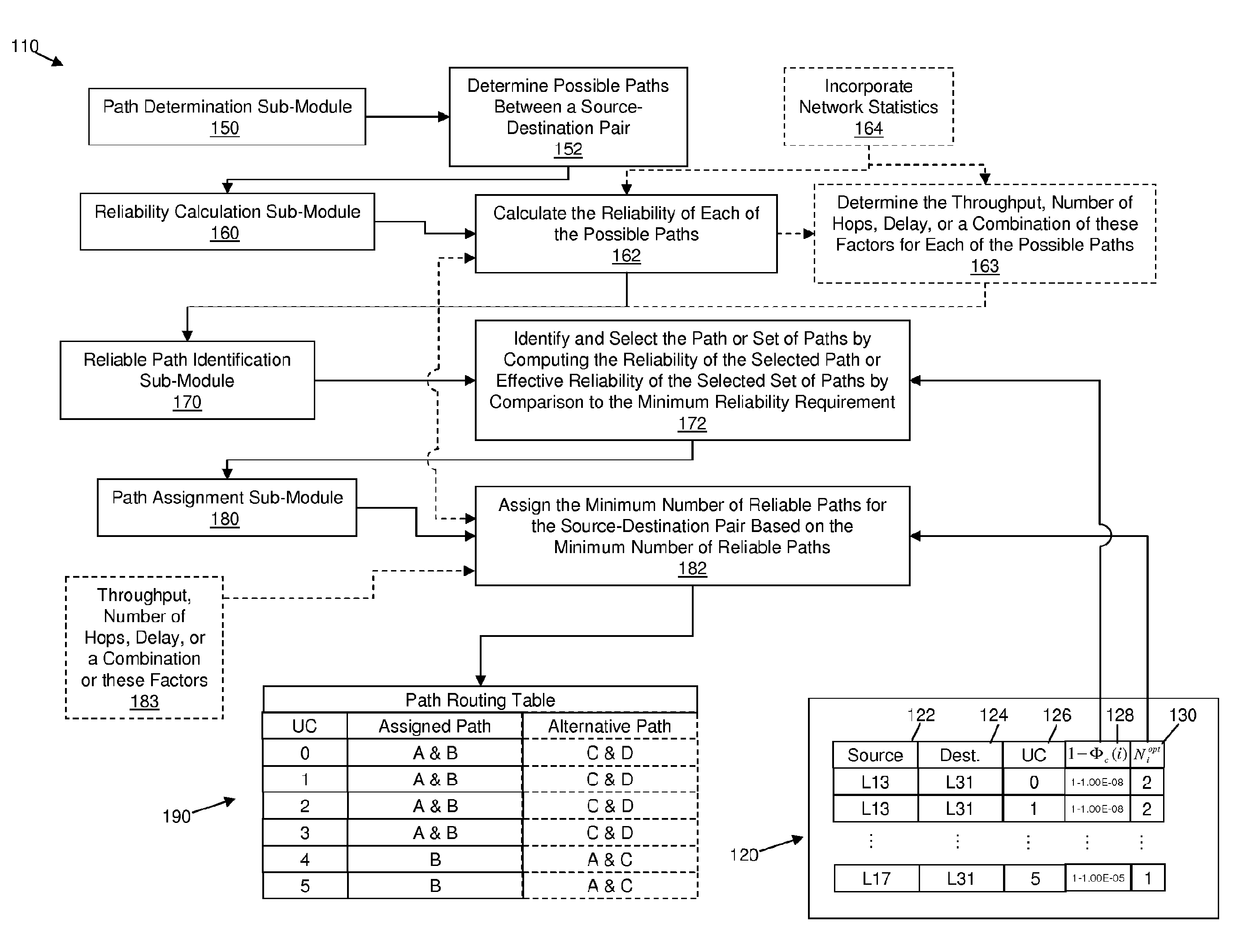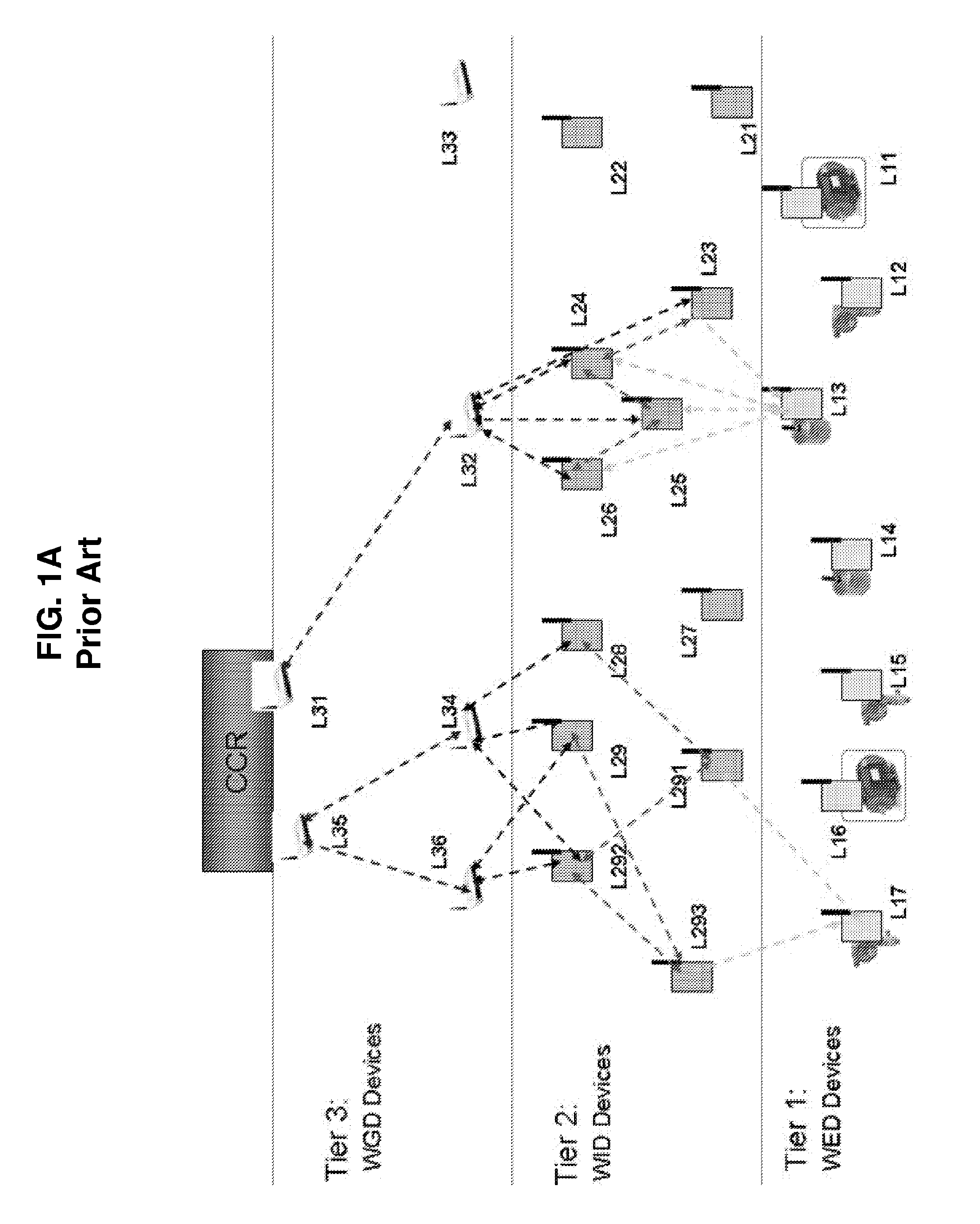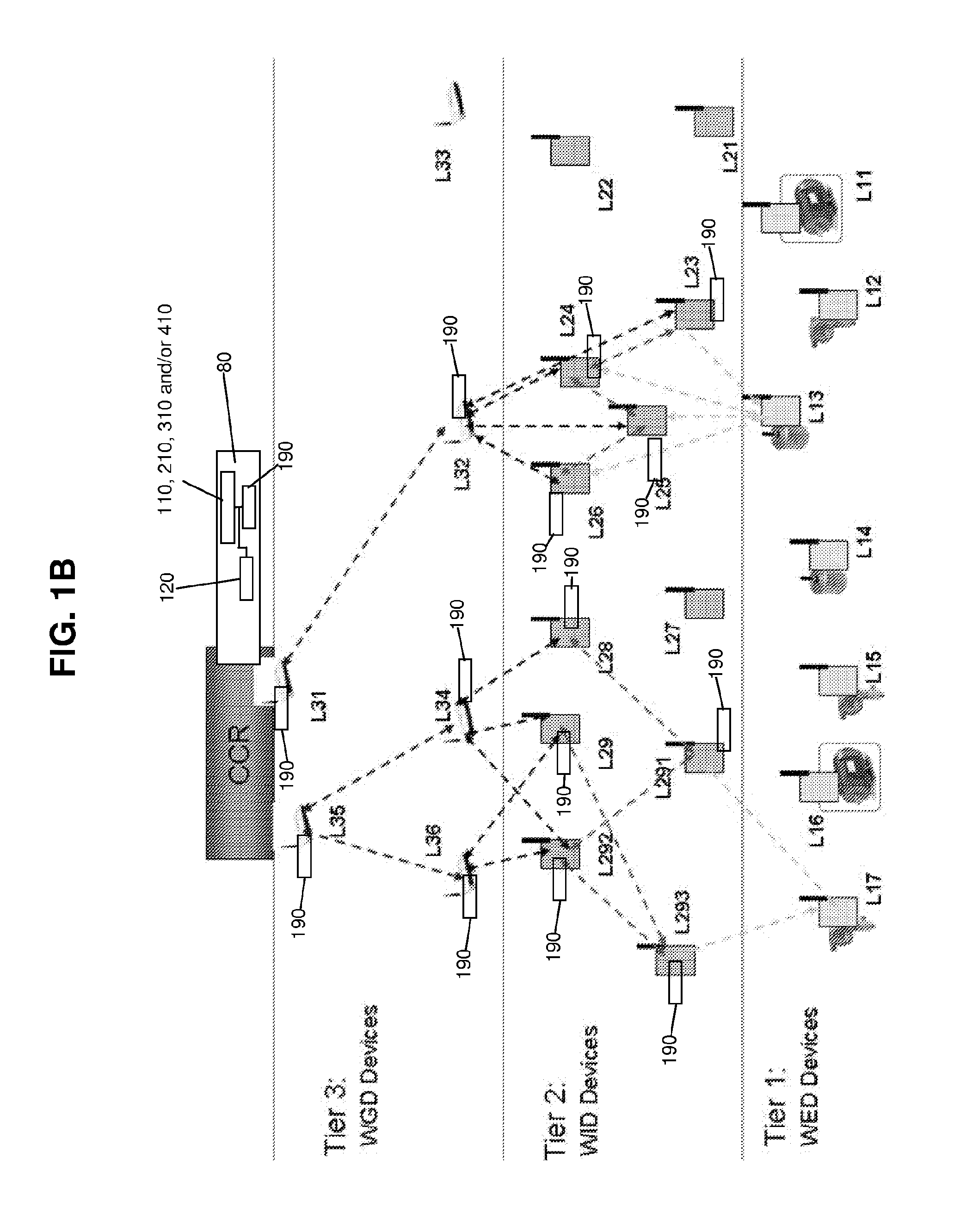Adaptive wireless process control system and method
a process control system and wireless technology, applied in the field of wireless process control systems and methods, can solve the problems of increasing the quantity and/or sophistication level of requisite hardware, and the topology increases the bandwidth requirements of the wireless spectrum, so as to improve the system efficiency and reliability, the effect of intelligent and efficient, and the use of minimal system resources
- Summary
- Abstract
- Description
- Claims
- Application Information
AI Technical Summary
Benefits of technology
Problems solved by technology
Method used
Image
Examples
Embodiment Construction
FIG. 1B is a diagram of a wireless process control and / or automation network such as one following the ISA-SP100 protocol; only connectivity for WEDs L17 and L13 to WGDs L35 and L31, respectively, is illustrated. The path L17-L293-L292-L36-L35 is one of the paths of the source-destination pair of L17 and the central control room (CCR). The combination L292-L35 is considered one of the links within this path. The path L17-L291-L28-L34-L35 is a path independent from L17-L293-L292-L36-L35, since no single intermediate link is common to the two paths. Elements L11 through L17 are WEDs at tier 1; elements L21 through L29 and L291 through L293 are WIDs at tier 2; and elements L31 through L36 are WGDs at tier 3. In the architecture shown in FIG. 1, the WGD L31 at the CCR is referred to as a master WGD, and the other WGDs L32 through L36 are additional WGDs that can provide additional links and / or serve as backup gateway devices in the event that the master WGD fails. In accordance with the...
PUM
 Login to View More
Login to View More Abstract
Description
Claims
Application Information
 Login to View More
Login to View More - R&D
- Intellectual Property
- Life Sciences
- Materials
- Tech Scout
- Unparalleled Data Quality
- Higher Quality Content
- 60% Fewer Hallucinations
Browse by: Latest US Patents, China's latest patents, Technical Efficacy Thesaurus, Application Domain, Technology Topic, Popular Technical Reports.
© 2025 PatSnap. All rights reserved.Legal|Privacy policy|Modern Slavery Act Transparency Statement|Sitemap|About US| Contact US: help@patsnap.com



